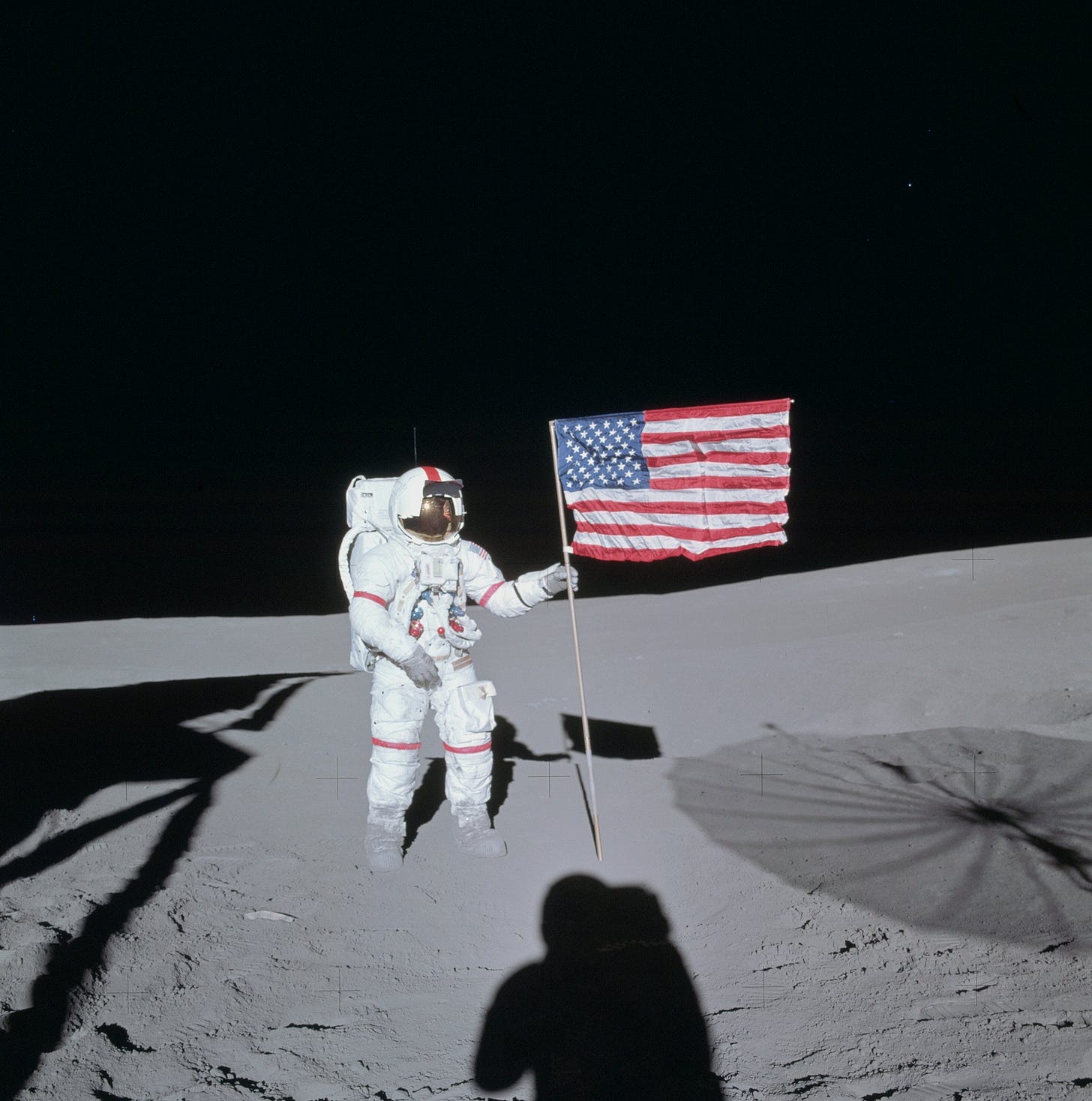TDIH: Apollo 14 returns to Earth
The astronauts had just become the third NASA crew to walk on the moon.
On this day in 1971, the crew of Apollo 14 returns to Earth. The astronauts had just become the third NASA crew to walk on the moon.
Remarkably, the Apollo 14 crew undertook their mission having just witnessed the “successful failure” that was Apollo 13. The latter mission, you may recall, nearly ended in disaster when one of Apollo 13’s oxygen tanks exploded, leaving three astronauts in a crippled spaceship about 200,000 miles from Earth.
The crew of Apollo 14 surely understood the very real possibility that they could be killed or stranded in space. They undertook their mission anyway.
Now NASA—and America—were back.
Not that it was easy. The mission was plagued with hiccup after hiccup. Surely Apollo 14’s crew wondered if the mission would ever be completed or if they would be forced to scrub the moon landing, just as their predecessors had done a year earlier.
First, the launch was delayed because of the weather. Then the command service module had trouble docking with the lunar module. Next, the moon landing was nearly disrupted by a fake ABORT signal. Finally, even the landing radar decided to malfunction.
Fortunately, they reset it and got it working just in time. The mission commander, Alan Shepard, then landed the lunar module manually.
But Shepard was up for anything. He’d worked long and hard to be on that flight. The faulty landing radar was nothing compared to the problem he’d already solved to get there.
When NASA tapped Shepard for the mission, he was the oldest U.S. astronaut to go into space. He was one of the original Project Mercury astronauts, but he’d been grounded not too long after those feats. He’d developed an inner ear problem known as Ménière’s disease. NASA was understandably quick to ground Shepard—but Shepard was equally quick to look for a solution. He finally found a doctor who was willing to attempt a risky surgical cure. It worked, and Shepard muscled his way back onto active flight duty.
“We got all kinds of flak from the guys,” he later said of this time. “In the first place, I hadn’t flown anything since 1961, and here it was 10 years later, and the two guys with me had not flown before at all, so they called us the three rookies.”
The 47-year-old “rookie” not only landed Apollo 14’s lunar module manually, but he managed to land closer to his intended target than any of the other previous moon missions.
The Apollo 14 astronauts spent nearly two days on the moon, conducting experiments and gathering information. Just as they were leaving, Shepard famously took a golf ball and prepared to hit it. “I’m going to try a little sand trap shot here,” he joked. The first shot kicked up lunar dust, but the second shot, Shepard said, went “[s]traight as a dime. Miles and miles and miles.”
Okay, so it really went a few hundred feet. He was joking. But that American pioneer surely felt great just standing there, having worked so hard to get to the moon in the first place.
Sources can always be found on my website, here.



I remember all of the first astronauts including Alan Shephard and, I remember his golfing on the moon.
Each of the earlier astronauts were Heros with flights that had large percentages of failure and even death. But, these men and women understanding the risks, flew anyway. Thank you Tara for remembering Appolo 14 and Alan Shepard.
It sounds like they were lucky to have the "old" guy on the mission. I forget which astronaut said it but thus is one of my favorite quotes on space flight. "You are strapped to the top of a roman candle to be launched into space on a craft where everything was made by the low bidder".